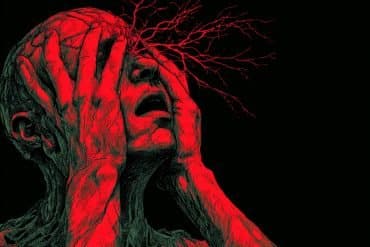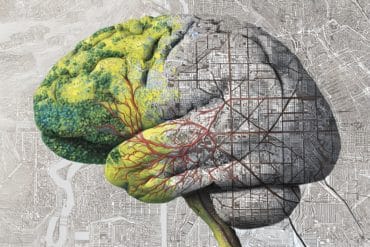Summary: A new study demonstrates that home-based transcranial direct current stimulation (tDCS) is a safe and effective method for treating depression. Participants in the study who used tDCS at home showed significant improvements in depressive symptoms compared to those in a control group.
The treatment, which delivers a mild electrical current to the brain, may provide an accessible alternative to traditional therapies for patients with moderate to severe depression. This breakthrough could improve access to effective treatment for millions suffering from depression worldwide.
Key Facts:
- Home-based tDCS was found to be safe and effective for treating depression.
- Patients using active tDCS showed three times higher remission rates than controls.
- This noninvasive method could be a new first-line option for managing depression.
Source: UT Houston
A device that delivers direct stimulation to the brain was found to be a safe and effective means of treating depression at home, according to a new study by researchers at UTHealth Houston; the Institute of Psychiatry, Psychology & Neuroscience at King’s College London; and the University of East London.
The research was published in Nature Medicine on Oct. 21, 2024.
Transcranial direct current stimulation (tDCS) is a form of noninvasive brain stimulation that applies a weak, direct current of between 0.5 to 2 milliampere to the scalp via two electrodes. It is already commonly used in clinics to treat conditions such as psychosis and eating disorders. The clinical trial assessed tDCS that was used in a home setting and self-administered by patients.

King’s College London led the international study. Co-author and lead investigator for the U.S. site was Rodrigo Machado-Vieira, MD, PhD, MSc, professor with the Louis A. Faillace, MD, Department of Psychiatry and Behavioral Sciences in McGovern Medical School at UTHealth Houston.
“The results from this study, which tested home-based tDCS, may represent an important advance in the mood disorders field for improving feasibility and therapeutic response with this new neuromodulation modality,” Machado-Vieira said.
“These latest results confirmed a positive profile for safety and efficacy similar to early studies with patients with depression and bipolar disorder, and the home-based therapy may facilitate access of this treatment to a larger number of patients.”
The study included 174 adult participants with a diagnosis of severe to moderate depression. They were randomly assigned to one of two treatment arms: active tDCS or inactive tDCS, which used the same device but did not provide a current.
Participants had a 10-week course of treatment, with five 30-minute sessions a week for the first three weeks, followed by three 30-minute sessions a week for the following seven weeks.
Researchers found that participants in the active arm of the trial showed significant improvements in the severity of their depression, as well as an overall clinical response and remission, compared to those in the inactive placebo control arm.
The rates of treatment response and remission were three times higher in the active treatment arm compared to the placebo arm, with 44.9% in the active arm demonstrating a remission rate compared to 21.8% of the control group.
“The burden of depression is mostly keenly felt by the 280 million people worldwide currently managing symptoms. While a combination of antidepressants and therapy generally proves to be effective for many people, medication can have side-effects that some can find disruptive.
“Our study has demonstrated that tDCS is a potential first-line option that could help those in need,” said Cynthia Fu, MD, PhD, the study’s senior author and a professor of affective neuroscience and psychotherapy at King’s College London.
“There is no such thing as the perfect medical intervention. Medication can have unintended side effects, while therapy is both time- and resource-intensive.
“Our hope is that tDCS can provide a viable third alternative for people with moderate to severe depression to help them better manage their symptoms,” said Rachel Woodham, MSc, the study’s first author and a research assistant at the University of East London.
“This breakthrough publication crowns the eight years of work that has been done by the fantastic team at Flow and the team of researchers at King’s College London, UTHealth Houston, and the University of East London, who led the study.
“Nature Medicine is one of the top medical journals in the world, and this publication speaks to the quality of the study design and results. Our core mission was, and still is, to create a treatment that is effective, safe, and accessible to as many people as possible,” said Daniel Månsson, chief clinical officer and co-founder of Flow Neuroscience, which funded the study.
UTHealth Houston co-author and co-lead investigator for the U.S. site was Jair Soares, MD, PhD, professor and the Pat R. Rutherford, Jr. Chair in Psychiatry in the Louis A. Faillace, MD, Department of Psychiatry and Behavioral Sciences at McGovern Medical School.
“The study results bring promise that an innovative treatment modality may become available for patients suffering from mood disorders some time in the near future,” Soares said.
About this brain stimulation and depression research news
Author: Deborah Lake
Source: UT Houston
Contact: Deborah Lake – UT Houston
Image: The image is credited to Neuroscience News
Original Research: Open access.
“Home-based transcranial direct current stimulation treatment for major depressive disorder: a fully remote phase 2 randomized sham-controlled trial” by Rodrigo Machado-Vieira et al. Nature Medicine
Abstract
Home-based transcranial direct current stimulation treatment for major depressive disorder: a fully remote phase 2 randomized sham-controlled trial
Transcranial direct current stimulation (tDCS) has been proposed as a new treatment in major depressive disorder (MDD).
This is a fully remote, multisite, double-blind, placebo-controlled, randomized superiority trial of 10-week home-based tDCS in MDD.
Participants were 18 years or older, with MDD in current depressive episode of at least moderate severity as measured using the Hamilton Depression Rating Scale (mean = 19.07 ± 2.73). A total of 174 participants (120 women, 54 men) were randomized to active (n = 87, mean age = 37.09 ± 11.14 years) or sham (n = 87, mean age = 38.32 ± 10.92 years) treatment.
tDCS consisted of five sessions per week for 3 weeks then three sessions per week for 7 weeks in a 10-week trial, followed by a 10-week open-label phase. Each session lasted 30 min; the anode was placed over the left dorsolateral prefrontal cortex and the cathode over the right dorsolateral prefrontal cortex (active tDCS 2 mA and sham tDCS 0 mA, with brief ramp up and down to mimic active stimulation).
As the primary outcome, depressive symptoms showed significant improvement when measured using the Hamilton Depression Rating Scale: active 9.41 ± 6.25 point improvement (10-week mean = 9.58 ± 6.02) and sham 7.14 ± 6.10 point improvement (10-week mean = 11.66 ± 5.96) (95% confidence interval = 0.51–4.01, P = 0.012). There were no differences in discontinuation rates.
In summary, a 10-week home-based tDCS treatment with remote supervision in MDD showed high efficacy, acceptability and safety. ClinicalTrials.gov registration: NCT05202119






